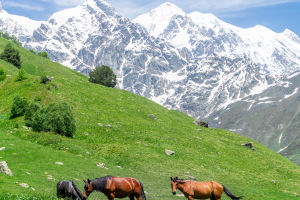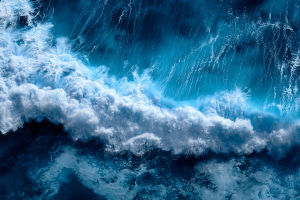The survival of endangered species has become one of the most pressing environmental challenges of the 21st century.
As habitats continue to shrink, human activity increasingly threatens biodiversity, and many species teeter on the brink of extinction.
Efforts to protect these species are not only about saving individual animals—they are about preserving the balance of entire ecosystems.
This article will explore what endangered species are, why they matter, and the global conservation efforts dedicated to ensuring their survival.
What Defines an Endangered Species?
Endangered species are those animals and plants that are at risk of becoming extinct. This risk can come from various factors, including habitat destruction, poaching, pollution, and climate change. The International Union for Conservation of Nature (IUCN) maintains a "Red List" that classifies species based on their risk of extinction.
The categories range from "Least Concern" to "Critically Endangered," with "Extinct" being the most severe.
A species is classified as endangered when the population is so small that it cannot recover without intervention. For example, the Sumatran orangutan is classified as Critically Endangered, with fewer than 14,000 individuals remaining in the wild. Similarly, the Javan rhinoceros is one of the rarest large mammals on Earth, with fewer than 75 individuals left in a single reserve.
The Impact of Extinction on Ecosystems
Every species plays a specific role in its ecosystem, and the extinction of one can have cascading effects on other species. For instance, predators like wolves regulate the populations of herbivores, preventing them from overgrazing vegetation.
Without these apex predators, ecosystems can become unbalanced, leading to the collapse of plant and animal communities.
Moreover, many endangered species contribute to ecosystem services, which benefit human populations. For example, pollinators like bees and butterflies are essential for food crops. If these species were to disappear, it would threaten global food security.
Major Threats to Endangered Species
Several human-driven factors contribute to the endangerment of species. Here are some of the most pressing threats:
1. Habitat Destruction: Deforestation, urban expansion, and agriculture are the leading causes of habitat loss. As natural habitats disappear, animals are left with fewer places to live, feed, and reproduce.
2. Poaching and Illegal Wildlife Trade: The demand for animal products like ivory, fur, and horns fuels illegal hunting. Rhinos, elephants, and tigers are among the most affected by poaching.
3. Climate Change: Rising temperatures, shifting weather patterns, and extreme weather events disrupt ecosystems and make survival difficult for many species.
4. Pollution: Chemicals, plastics, and toxins pollute the land, water, and air, directly harming wildlife. Marine animals, such as sea turtles, are particularly vulnerable to ocean pollution.
Global Conservation Efforts to Protect Endangered Species
As the threats to biodiversity grow, numerous global organizations, governments, and conservationists are stepping up their efforts to protect endangered species. Here are some of the key conservation strategies being employed:
1. Protected Areas and Wildlife Reserves: Establishing national parks and wildlife reserves is one of the most effective ways to protect endangered species. These areas provide safe havens where species can live and breed without the threat of poaching or habitat destruction. The establishment of marine protected areas (MPAs) has also helped conserve marine life.
2. Captive Breeding and Reintroduction Programs: Zoos, wildlife parks, and conservation centers have developed breeding programs to increase the population of endangered species. These programs often focus on species that are too small in number to survive in the wild. The reintroduction of these species into their natural habitats is carefully managed to ensure that they adapt and thrive.
3. Anti-Poaching and Wildlife Law Enforcement: Governments and organizations have ramped up efforts to combat illegal poaching by strengthening law enforcement. Anti-poaching patrols, wildlife crime units, and stricter penalties for wildlife trafficking have made a significant impact. For example, the "Smart Patrols" program in Africa uses GPS technology to track and monitor wildlife to prevent poaching.
4. Community Involvement: Conservation efforts are more successful when local communities are involved. Programs that educate and provide incentives for communities to protect local wildlife are essential. For example, the Great Ape Protection Act in some countries provides financial support to communities that help protect primate habitats from deforestation and poaching.
5. Research and Monitoring: Continuous research is vital for understanding species' behavior, ecology, and needs. Conservationists are increasingly using technology like drones, GPS collars, and camera traps to track endangered species and monitor their habitats. This data helps in making informed decisions about conservation strategies.
Success Stories in Conservation
While many species are still at risk, there have been notable successes in global conservation efforts:
1. The Return of the Bald Eagle: The Bald Eagle, the national symbol of the United States, was once on the brink of extinction due to hunting and habitat destruction. Thanks to legal protections, conservation programs, and a ban on the pesticide DDT, the Bald Eagle population has rebounded. Today, the species is no longer listed as endangered.
2. The Black-Footed Ferret: Once thought to be extinct, the Black-Footed Ferret was rediscovered in 1981. Through a captive breeding program and careful reintroduction efforts, the population of Black-Footed Ferrets has grown from just 18 individuals to over 300.
3. The Recovery of the Arabian Oryx: The Arabian Oryx, hunted to extinction in the wild by the 1970s, has been successfully reintroduced to its natural habitat in the Arabian Peninsula. Conservationists used captive breeding programs and released the animals into protected areas, where they have flourished.
How Can You Help Protect Endangered Species?
While large-scale efforts are crucial, individuals can also make a difference in protecting endangered species. Here are some simple steps you can take:
1. Support Conservation Organizations: Donate to organizations that work on the front lines of wildlife protection, such as the International Union for Conservation of Nature (IUCN) and The Nature Conservancy.
2. Adopt Sustainable Practices: Reduce your environmental footprint by adopting sustainable habits, such as reducing waste, supporting sustainable agriculture, and minimizing carbon emissions.
3. Raise Awareness: Spread the word about the importance of conserving endangered species. Educate others about the risks animals face and encourage them to get involved.
Dr. Jane Goodall, primatologist and conservation expert, stated: "Protecting endangered species is vital not only for the animals themselves but for the ecosystems that sustain life on Earth."
Conclusion
Endangered species face numerous threats, but global and local conservation efforts offer hope for their survival. Every species contributes to the balance of ecosystems, and losing any can have lasting impacts.
By continuing to support conservation initiatives and taking personal responsibility, we can help ensure that future generations will experience the beauty and biodiversity of our planet. Protecting endangered species is not just an environmental issue; it's a moral imperative that impacts the well-being of all life on Earth.


